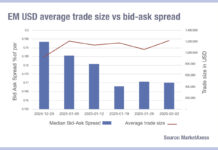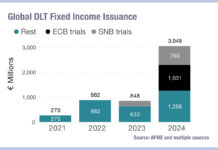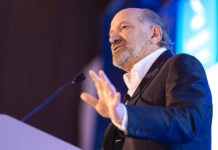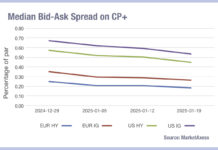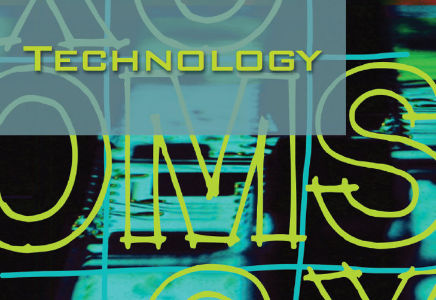Will buy-side firms build the OMS they need?
Complaints about order management system performance still dog the fixed income markets, increasing the likelihood of in-house technology solutions.
Forty-three percent of buy-side firms are upgrading their order management systems (OMSs) and 10% are switching OMS providers, according to research by block-trading platform Liquidnet released in March 2018. The big issue for most – 76% of respondents – was a need for standardised connectivity.
Increased efficiency, particularly around low touch trading, is also pushing asset managers to look at execution management systems (EMSs). Liquidnet’s research found that 43% of small firms and 64% of large firms were investing in an EMS, and 94% of those were choosing to do so to manage liquidity.
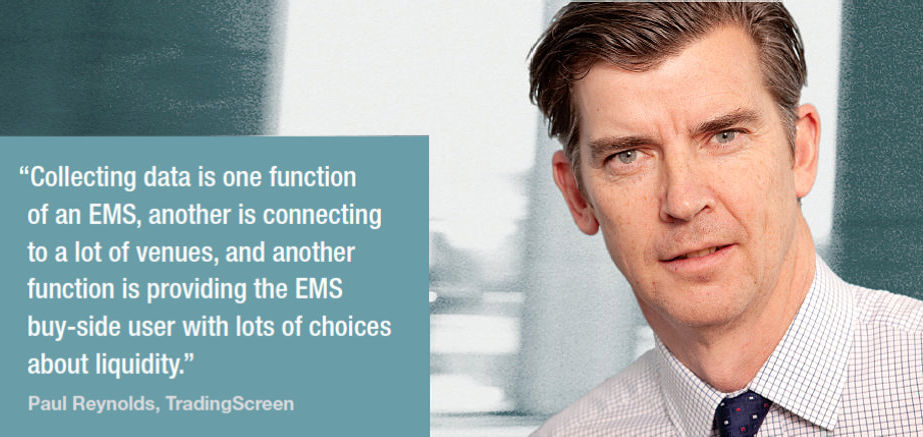
“When a buy-side firm wants to use an EMS to stage orders for liquidity, typically it realises that it needs better technology to interact with the market and orders,” says Paul Reynolds, head of fixed income at EMS provider TradingScreen. “Collecting data is one function of an EMS, another is connecting to a lot of venues, and another function is providing the EMS buy-side user with lots of choices about liquidity, so that they can prove they found the best possible trade for their customer.”
Speaking at the FIX EMEA Trading Conference on 15 March 2018, one senior fixed income dealer said, “The proliferation of EMS vendors in this space is reflective of the fact that OMS vendors just haven’t kept up with client demand.”
High touch/low touch
The cost pressures felt by asset managers’ front office is driving interest in automation, to enable a greater volume of work to be handled by the trading team, without increasing the size of the team itself.
A notable trend has been to separate handling of low touch orders – which require little oversight – and high touch orders – which require considerable intervention by the trading team. Loosely speaking the former tend to be in more liquid instruments. The capacity of EMS platforms to handle trading of liquid assets has increased their appeal.
Yet equity trading models should not be expected to function for more illiquid bonds says Fabien Orève, head of trading at Candriam Investors.
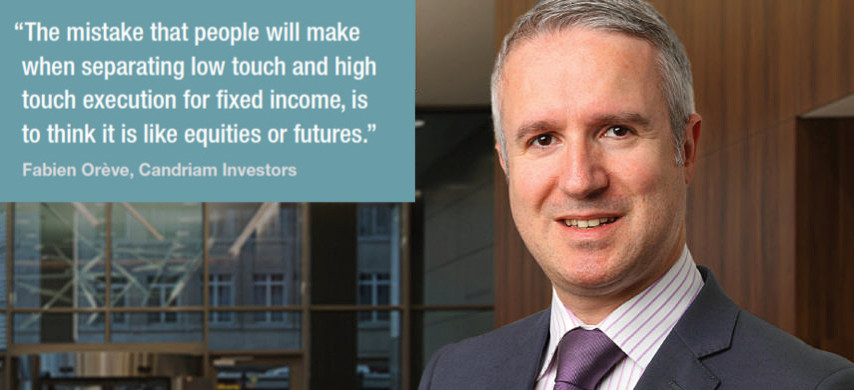
“The mistake that people will make when separating low touch and high touch execution for fixed income, is to think it is like equities or futures,” he says. “Today, there is not yet sufficient quantity of public volume data in the European fixed-income markets to reconstruct historical volumes across thousands of bonds. For equities, sending an order to an algorithm is a straightforward process that can be subject to pre-trade constraints like maximum average daily volume (ADV %). For fixed income you need to find something else and use more criteria when you trade through RFQ platforms. Pre-trade analysis and counterparty selection is far more challenging for fixed income than equities. A difficult market environment can also greatly challenge the low touch / high touch separation, in particular for fixed-income. Trading desks always need the flexibility of senior traders to adapt to changing market conditions.”
Front office technology providers for buy-side firms need to build functionality that asset managers can employ on their fixed income trading desks, and where provided by an EMS ensure it integrates with the OMS.
Late developer
Equity traders have so many electronic trading options, they use randomisation tools to choose between their broker-trading algorithms. Bond markets are still relatively voice-heavy and the slow evolution has delayed the development of service offerings.
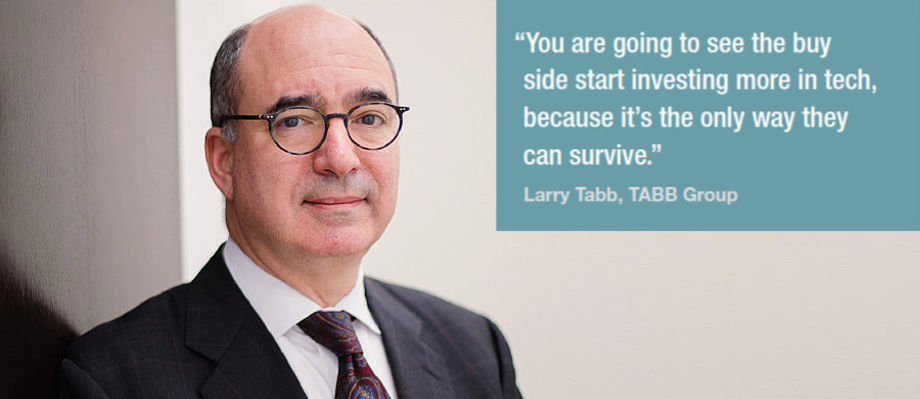
“Only recently are bonds being traded by professional fixed income traders,” says Larry Tabb, head of research at analyst firm Tabb Group. “Historically, fixed income was traded by portfolio managers on a one-on-one basis, so two portfolio managers working for the same firm and matching different portfolios would have their own broker relationships, their own sourcing capabilities, their own sales guys and they would possibly be talking to the same people at the same time, but doing it completely independently.”
Instrument selection is a more complex component of the fixed income investment and trading process than it is in stock trading which is ISIN-specific. To match a portfolio’s needs, often a trader may use a set of criteria that allows them to find appropriate bonds to support the underlying cash flows. That has to be managed as part of the interaction between the PM and trader in the OMS.
The second issue is that the market has not seen a new order management system launched since BlackRock launched Aladdin a decade ago, asserts Tabb. The mass appeal of building the new Facebook or Google draws most technology entrepreneurs to develop something for the masses, and hit it rich in Silicon Valley, rather than Wall Street.
“Aladdin does pretty well with bonds, but most developers in the last decade have wanted to develop apps and social media platforms, they haven’t really wanted to go and build fixed income trading platforms,” he notes. “There are very few folks developing these new technologies. So you have got the complexity of trying to extend an equity platform in the fixed income world, the recently increasing demand to handle bonds natively, and limited entrepreneurial engagement.”
Gap in supply
Technology vendors are aware of the gap between client demand and service provided in the OMS space. For some, the need to partner with OMS providers can make discussion of the issues difficult. One of the key concerns is the integration between systems.
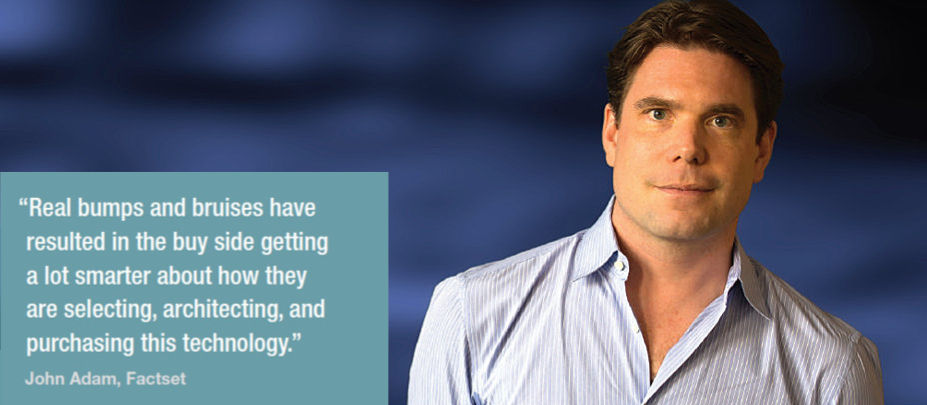
“If you look at a buy-side enquiry regarding a new OMS or EMS, about two-thirds of it is going to be around connectivity and coverage for other asset classes,” says John Adam, senior director, Portfolio Management & Trading Solutions at EMS provider Factset. “That’s not an accident, that shows the real bumps and bruises that have resulted in the buy side getting a lot smarter about how they are selecting, architecting, and purchasing this technology.”
Integration between OMS and other technology, whether EMSs, transaction cost analysis support and risk platforms is variable. In some cases, providers have built relationships in order to enhance the integration between systems.
“When we speak with a buy-side firm looking for an EMS the conversation becomes detailed around their OMS and whether we are connected with it, and whether there will be seamless order-staging from OMS to the EMS,” says Reynolds. “That is a very important part of the conversation, and it depends on the OMS. For instance, we have a very close relationship with Simcorp, an OMS provider, and if our client is a Simcorp user it’s a very easy conversation.”
“Having a single OEMS provider that can handle multi-asset trading can better support trading desks, by using standards such as the FIX protocol to tackle connectivity in an efficient manner,” says Orève. “If you go to your IT teams with a package of FIX-related issues, that makes it easier for them to handle them. You can address different asset classes at the same time, like broker algos for cash equities, futures and FX or a multi-lateral trading facility platform for mid-cap stocks and corporate bonds’ conditional orders.”
However, there are limits to the use of FIX messaging says Adam, and that can push traders towards using more purpose-built messaging.
“The next level you have to go to is an application programming interface (API) message, driving integration between the two applications,” he says. “We use FIX for order flow, but for order administration and processing an API is a much better fit.”
With a regulatory requirement to evidence best execution in a quantitative manner, pressure on fees and low-cost passive funds competing for fund flows with active managers, it is likely that any OMS performance gaps will be tackled by asset managers themselves, where third party providers do not meet demand.
“They have to outperform the ETFs, and they can’t do that with sloppy process, and they can’t do that by outsourcing their execution and outsourcing all their technology infrastructure,” says Tabb. “So you are going to see the buy side start investing more in tech, because it’s the only way they can survive.”
©TheDESK 2018
TOP OF PAGE

